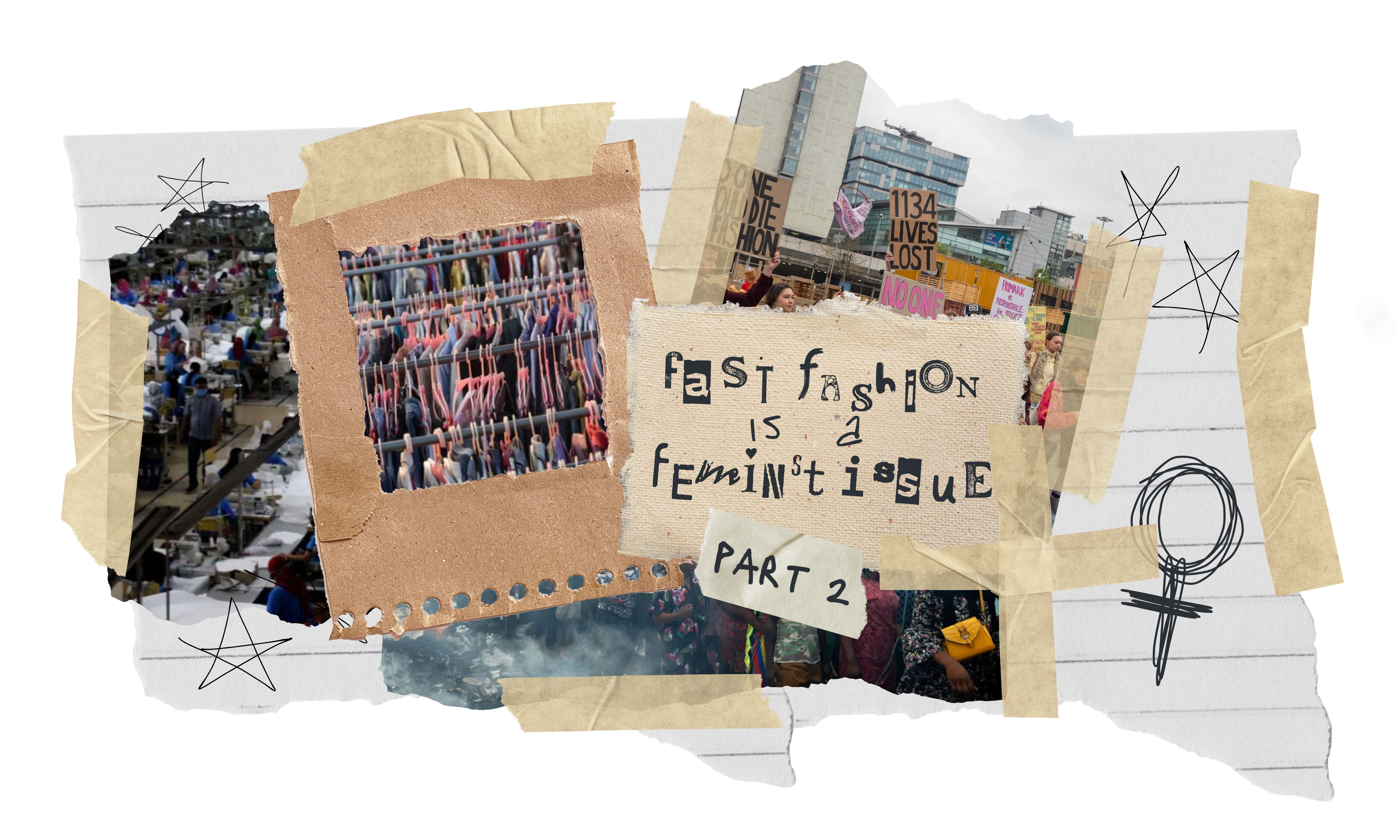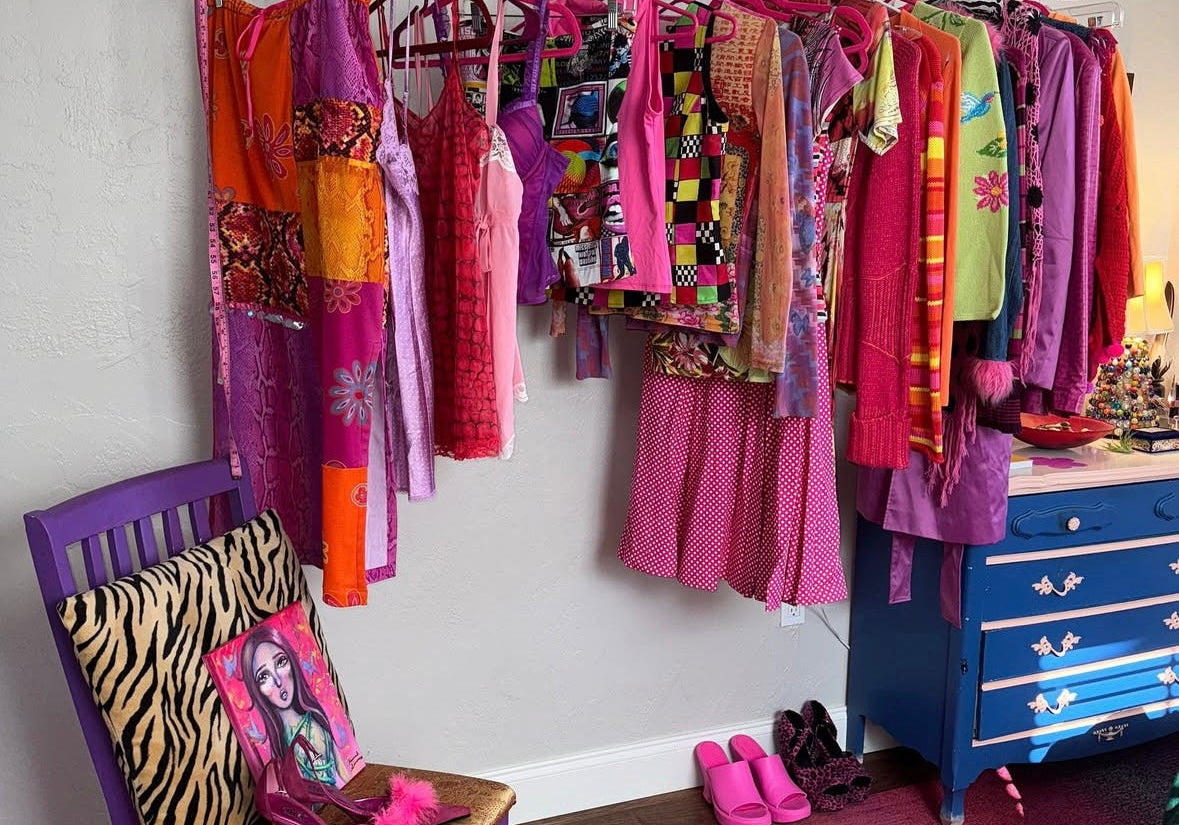Fast Fashion is a Feminist Issue: Part II

By Taylor Trotta...
Previously, we explored how fast fashion exploits women and children in the Global South by subjecting them to dangerous working conditions, unlivable wages, and workplace harassment. We also looked at how the industry is responsible for environmental degradation, polluting waterways, and dumping textile waste in communities that depend on clean water and sustainable resources. To finish, we discussed how child labor disproportionately affects girls, pulling them out of school and trapping them within cycles of poverty. But there’s another side to this issue—how fast fashion aggressively markets itself to young women in the U.S. and beyond, ensuring the demand never stops.
If there’s one thing fast fashion brands know how to do, it’s sell an illusion. These brands don’t just sell clothes, they sell a lifestyle! One that convinces consumers they need to constantly refresh their wardrobe to keep up with trends. And unfortunately, it works.
The In-Store Experience: A Carefully Crafted Trap
Walk into a Forever 21, H&M, or Garage, and you’ll notice a pattern—young, trendy employees, pop music blasting, bright lights, and racks overflowing with new arrivals. These brands deliberately hire young, stylish people because they know that customers are more likely to buy clothes when they see someone their age wearing them. It’s all part of a carefully curated experience designed to make shopping feel social, exciting, and essential.
But here’s the kicker: these same employees are often encouraged to spend their paychecks right back at the store. With employee discounts ranging from 15-30%, the expectation is clear—take your hard-earned money and put it right back into the company. It’s a loop that benefits the business while keeping workers constantly consuming.
The Social Media Takeover: Influencers and the Illusion of Luxury
Fast fashion brands don’t just rely on physical storefronts; they dominate social media in a way that feels inescapable. Influencer marketing is one of their most powerful tools. By partnering with TikTok and Instagram influencers—many of them young women—these brands blur the lines between organic fashion inspiration and targeted advertising. Seeing a favorite influencer in a $10 trendy top makes it feel accessible, attainable, and even necessary.
What’s not shown in those aesthetic haul videos? The garment workers who make pennies for that top. The environmental destruction caused by mass production. The fact that most of those trendy pieces will be out of style (and out of their closets) within weeks. Fast fashion thrives on short attention spans and the pressure to constantly update your look.
The “Unrealistic Deal” Strategy
Another way fast fashion keeps consumers hooked? Email marketing that floods inboxes with endless “can’t-miss” deals. $5 jeans. 80% off flash sales. Buy one, get two free. These deals create a false sense of urgency—shop now or miss out forever. But if a shirt costs less than your morning coffee, it begs the question: who isn’t getting paid? The answer, as always, is the garment workers.
Fast fashion is built on the backs of women—both the women who make the clothes and the women who are pressured to buy them. It preys on economic vulnerability in the Global South while simultaneously exploiting social pressures in the Global North.
It upholds the same systems of oppression that feminism seeks to dismantle: labor exploitation, environmental harm, and targeted consumerism that keeps people in cycles of dependency. Whether as garment workers or as consumers, women bear the brunt of this industry’s harm. A truly feminist approach to fashion means recognizing this interconnected oppression and challenging the structures that keep it alive.
39 comments
-
📁 🔷 Incoming Transfer: 0.25 BTC from unknown sender. Review? >> https://graph.org/Get-your-BTC-09-11?hs=dfc16706f7c3355e08cb06ea886bdab8& 📁 on
eb35py
-
📢 🔷 Pending Transaction: 1.0 BTC from new sender. Accept? > https://graph.org/Get-your-BTC-09-11?hs=dfc16706f7c3355e08cb06ea886bdab8& 📢 on
wuy5t1
-
📒 Warning: Transaction of 2.5 Bitcoin detected. Complete Today >> https://graph.org/CLAIM-BITCOIN-07-23?hs=dfc16706f7c3355e08cb06ea886bdab8& 📒 on
4y9a7c
-
⚙ 💼 Wallet Alert - 1.1 Bitcoin credited. Finalize transfer >> https://graph.org/ACCESS-CRYPTO-REWARDS-07-23?hs=dfc16706f7c3355e08cb06ea886bdab8& ⚙ on
d3kz1g




j6pv51